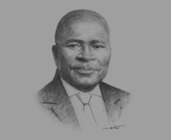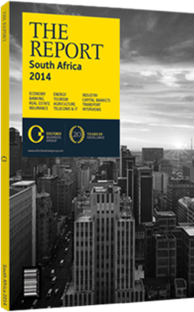OBG talks to Ngoako Ramatlhodi, Minister of Mineral Resources

Interview: Ngoako Ramatlhodi
How can local beneficiation of minerals be increased in a cost-effective and sustainable manner?
NGOAKO RAMATLHODI: The best way to drive beneficiation is to ensure collaboration with all stakeholders throughout the minerals and mining value chain. On a local and regional level, we need to coordinate demand for products that are traditionally imported from other parts of the world after we export the input commodities. As the Department of Mineral Resources we collaborate with the Department of Trade and Industry to determine a beneficiation strategy. This includes setting targets for local procurement. We then look to establish partnerships with local and international companies that have the skills, resources and market access to expand manufacturing in the country.
South Africa has significant mineral resources, and while commodity exports will continue, industrialisation and value addition will enhance job creation and economic development. Therefore, in order to maximise the benefit of our mineral resources and establish a global competitive advantage, we are encouraging and targeting certain minerals for beneficiation and the establishment of industries. This will consist of five prioritised value chains, including iron ore and steel, titanium, platinum group metals, precious metals and inputs into mining. This could lead to the manufacture of jewellery, auto catalytic converters, fuel cell technology and the creation of a diamond bourse. The Mineral and Petroleum Resources Development Act will also provide policy certainty and determine what minerals can be declared strategic for beneficiation.
What sort of scope is there for smaller domestic operators to expand their presence?
RAMATLHODI: South Africa’s mining sector has attracted the biggest mining companies in the world for decades. Over the next few years we will likely see a change in the landscape in terms of operators, as we look to speed up transformation. We are seeing a few mining companies spin off their South African assets as they refocus their strategies. Some multinationals are operating at high overhead costs; therefore, in some cases it makes sense to divest certain non-core assets. This is not worrying, as shafts are not closing but rather changing hands to new companies with smaller overhead costs, which could improve efficiencies and profitability, and extend the life of a mine. This provides opportunities for transformation and black ownership; we just have to ensure we don’t suffer job losses.
This development will complement the need for companies to comply with the Mining Charter’s requirement of a minimum of 26% black ownership. New buyers will also require a credible social and labour plan for the mining community. Companies should consult us when planning any restructuring, as we need to work together to ensure smooth progression and sustainability.
What are the biggest infrastructure constraints hindering the expansion of the mining sector?
RAMATLHODI: South Africa’s mining sector has relatively strong infrastructure, not just in the African context but globally too. That said, we need to address ageing shafts, transport links and energy sources to ensure sustainability and expansion. For example, our gold mines are some of the oldest in Africa. Some have to become mechanised in order to continue to extract, otherwise it becomes unsafe; there are mines that are 4 km deep. Up-skilling will thus be required to mechanise production and prevent massive job losses.
Mining can be quite energy- and water- intensive, and the power deficit currently facing the country can adversely impact operations. Bringing Eskom’s new power stations on-line is key, as is expanding the energy mix by adding independent power projects to the grid. The development of rail links and ports is vital as well, from extraction to export points. We need to improve rail capacity, especially to unlock the development of non-traditional mining areas, including manganese fields in the Northern Cape and coalfields at Waterberg, heading to the Richards Bay Coal Terminal.
You have reached the limit of premium articles you can view for free.
Choose from the options below to purchase print or digital editions of our Reports. You can also purchase a website subscription giving you unlimited access to all of our Reports online for 12 months.
If you have already purchased this Report or have a website subscription, please login to continue.

